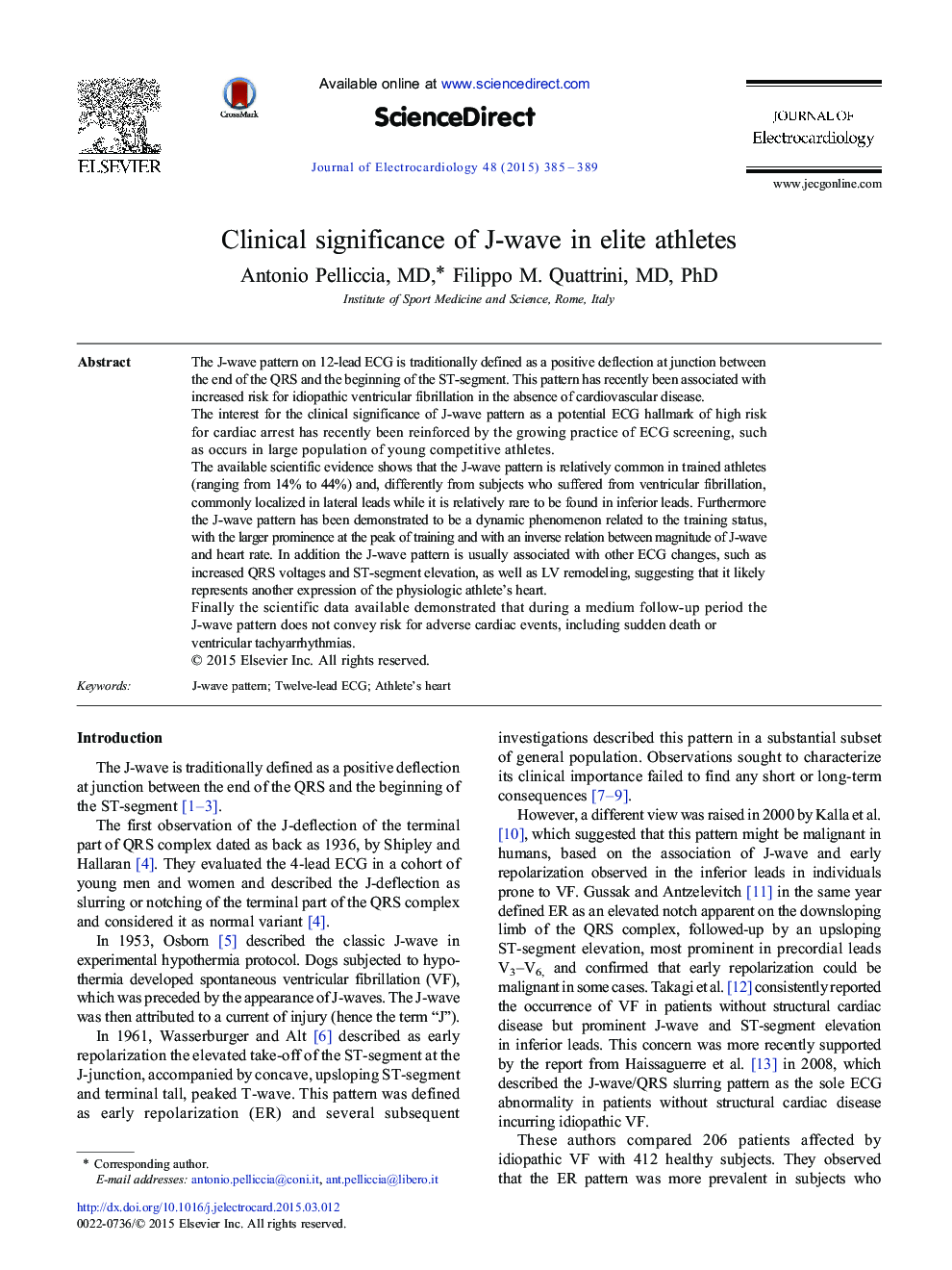| کد مقاله | کد نشریه | سال انتشار | مقاله انگلیسی | نسخه تمام متن |
|---|---|---|---|---|
| 2967588 | 1178852 | 2015 | 5 صفحه PDF | دانلود رایگان |

• The J-wave pattern is relatively common in trained athletes ranging from 14% to 44%.
• The most frequent localization in athletes is in anterior and/or lateral leads and relatively rare in inferior leads.
• The J-wave pattern is a dynamic phenomenon related to the training status and is usually associated with other ECG changes suggesting that it represents another expression of the athlete's heart.
• The follow-up studies available demonstrated that the J-wave pattern does not convey risk for adverse cardiac events or ventricular tachyarrhythmias.
The J-wave pattern on 12-lead ECG is traditionally defined as a positive deflection at junction between the end of the QRS and the beginning of the ST-segment. This pattern has recently been associated with increased risk for idiopathic ventricular fibrillation in the absence of cardiovascular disease.The interest for the clinical significance of J-wave pattern as a potential ECG hallmark of high risk for cardiac arrest has recently been reinforced by the growing practice of ECG screening, such as occurs in large population of young competitive athletes.The available scientific evidence shows that the J-wave pattern is relatively common in trained athletes (ranging from 14% to 44%) and, differently from subjects who suffered from ventricular fibrillation, commonly localized in lateral leads while it is relatively rare to be found in inferior leads. Furthermore the J-wave pattern has been demonstrated to be a dynamic phenomenon related to the training status, with the larger prominence at the peak of training and with an inverse relation between magnitude of J-wave and heart rate. In addition the J-wave pattern is usually associated with other ECG changes, such as increased QRS voltages and ST-segment elevation, as well as LV remodeling, suggesting that it likely represents another expression of the physiologic athlete's heart.Finally the scientific data available demonstrated that during a medium follow-up period the J-wave pattern does not convey risk for adverse cardiac events, including sudden death or ventricular tachyarrhythmias.
Journal: Journal of Electrocardiology - Volume 48, Issue 3, May–June 2015, Pages 385–389